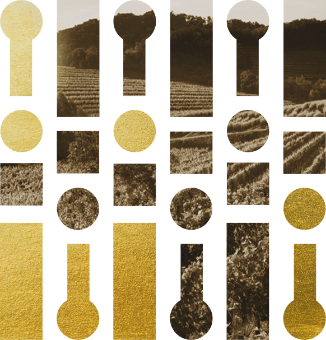Torre Rosazza
in the kaleidoscope
in the kaleidoscope

A strong land of contrasts. Friuli is a journey within a journey in the discovery of local foods and wine, of pairings and tastings, of ever new landscapes, flavors and histories, with one common thread: the great Friuli wines.
As we know, Ribolla Gialla is at its best with seafood-based pasta and rice dishes: for example, a risotto with prawns. But we also recommend it for a 100% locally produced aperitif, accompanied by Cormons prosciutto.
First the Benedictine monks, then the Dominicans. But also wars, raids and a great fire, and always a cultural outpost. With over a thousand years of history, the Abbey of Rosazzo has lived so many lives that it is impossible to tell about all of them here.
The wine that lived twice. Very ancient and already known to the Romans, Pignolo has disappeared twice and returned twice: in the 1700s and in the 1970s. A masterpiece that is at its best on its own, as a meditation wine.
Colli Orientali del Friuli “Roman Edition”: its name comes from the Forum Iulii, the ancient name of Cividale del Friuli, founded by Julius Caesar himself in the middle of the 1st century BC.
Pignolo has bunches tightly clustered like a pine cone. This is typical of the Colli di Rosazzo. And the last remaining vines grew right here at the Abbey. From the risk of extinction to rebirth. Perhaps this is also why its wines stand out for their longevity and are suitable for aging.
The Torre Rosazza logo shows more than just the façade of the estate and our vineyards. Looking at the T in the name you can see a small element: the characteristic shape of a loophole. A detail that is unique and original, like we are.
The first vineyards were planted at Torre Rosazza in the late 1970s. Our oldest vineyards are distinguished by their resistance to drought, qualitative consistency, and limited yields: from here exceptional grapes and wines are born.
This is well-known: the Torre Rosazza hill is the perfect place to grow grapevines. But they’re not the only things that grow so well here. There are two guests who put down roots centuries ago: the two ancient boxwood trees in the Villa’s garden.
Blanc di Neri is a traditional method sparkling wine made from Schioppettino grapes. White wine is made from red grapes by removing the skins from the must. The primary fermentation lasts 12 months. The sparkling wine production process with the wine on the lees lasts for another 18-30 months. A unique wine of great elegance.
Sometimes a stick is needed with wine. With white grapes we use the “bâtonnage”: a stick, or its modern steel equivalent, with which the wine is stirred, bringing back into suspension the lees that had deposited on the bottom of the barrique. Result: more body, structure and longevity for the wine.
Where there is wine there is home. Thus it was that in the late 1600s the noble Antonini family, already owners of the Torre Rosazza vineyards, decided to renovate the old medieval fortress and transform it into a hilltop residence. Thus begins, for everyone, the story of Turris Rosacea.
Torre Rosazza was originally a medieval fortress. From its towers it was possible to watch over movements along the surrounding streets. And archers aimed their arrows at any attackers from the loopholes that can be seen in the façade.
Not just wine. Before being used to hold wine casks, the Torre Rosazza cellar was the place where silkworms were raised. Sharecroppers later transformed it into an agricultural storage place, to support more profitable activities.
Picolit takes its name from the small size of the bunch and the berries. This is due to millerandage, a phenomenon that prevents the berries from growing: only a few ripen, but those that do reach a higher sugar concentration. A real rarity.
Friuli Tocai has very ancient origins. According to some, it comes from Hungary. For others, it coincides with Sauvignonasse, a French grape variety. For us, it is simply Friulian. Structure, fragrance, balance. To be enjoyed with great pleasure.
The “grave” are round pebbles sculpted by water and deposited by the Tagliamento river in the surrounding plains. The Friuli Grave area is named after them, and their presence creates the ideal soil for high quality wines.
A linguistic challenge: what do you call marly soil with layers of sandstone, rich in limestone, potassium and phosphorus, but poor in organic substances; with a grey-blue color tending toward yellow? The answer: “ponca.”